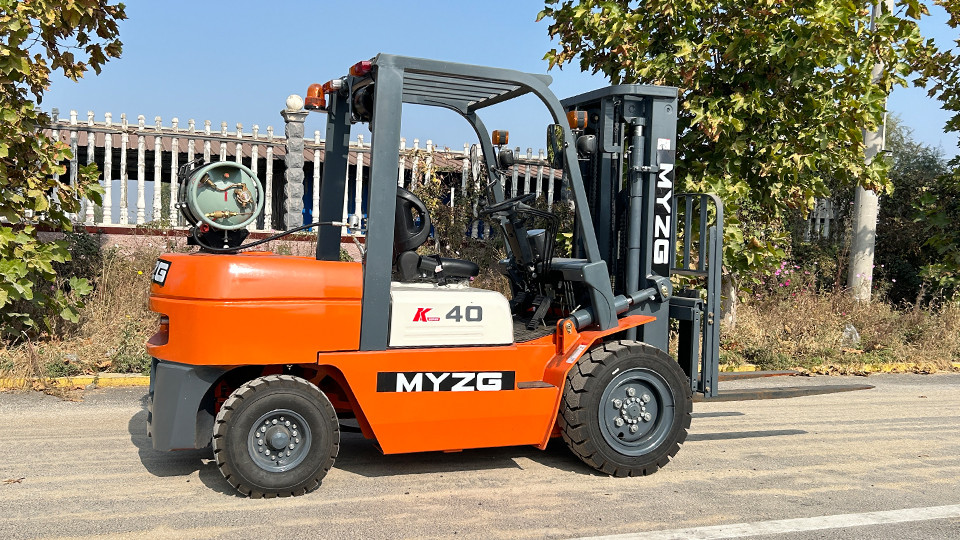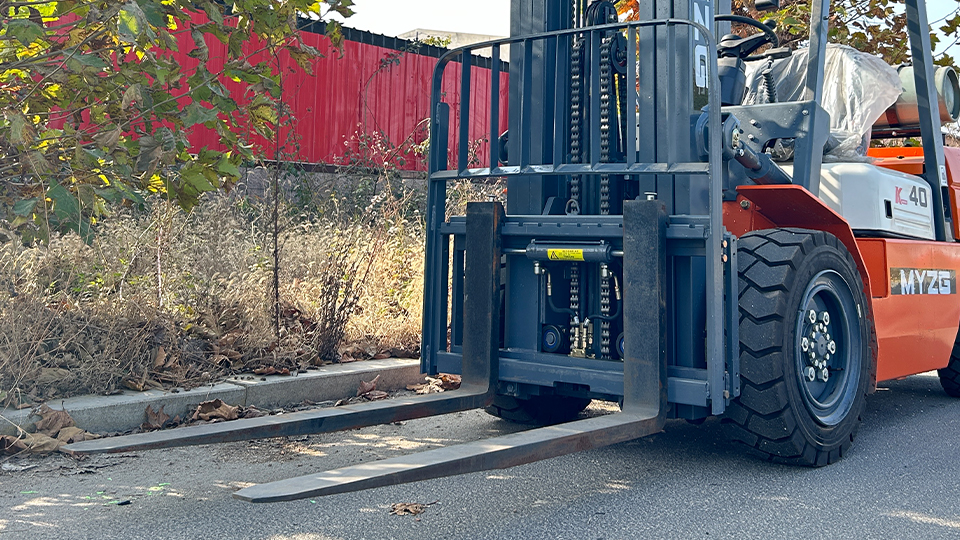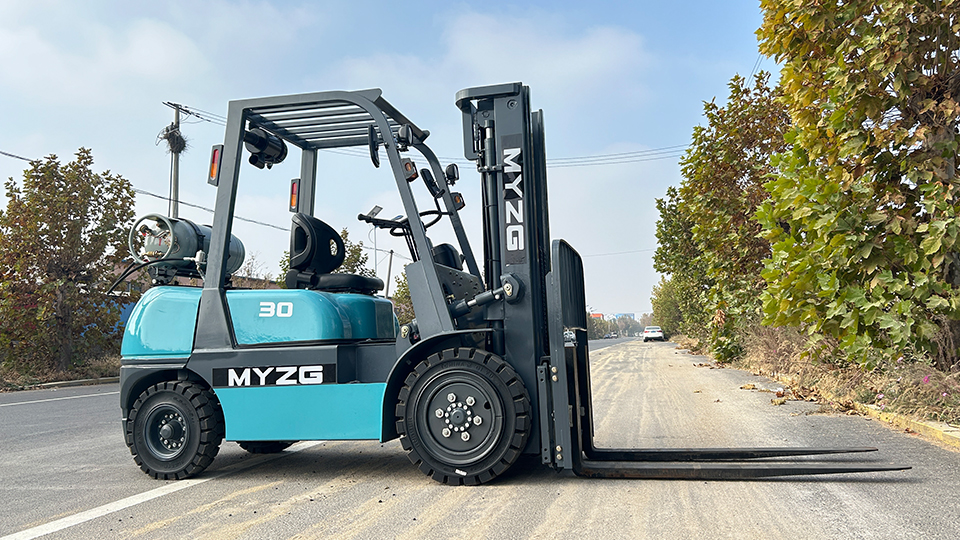
The modern warehouse and logistics industry relies heavily on forklifts for efficient material handling, stacking, and transportation. These workhorses are indispensable, but their operational efficiency and environmental impact are directly tied to the type of fuel they consume. Choosing the right fuel for a forklift fleet involves a complex interplay of factors, including cost, performance requirements, emissions regulations, infrastructure availability, and maintenance considerations. This technical article delves into the primary fuel types utilized by forklifts today, offering a comprehensive analysis of their characteristics, advantages, disadvantages, and the evolving landscape of alternative fuel technologies.
The Traditional Powerhouses: Internal Combustion Engine (ICE) Forklifts
Internal Combustion Engine (ICE) forklifts have long been the backbone of many industrial operations due to their robust power, extended runtimes, and ability to operate in demanding outdoor environments. They primarily rely on two widely available fossil fuels: Liquefied Petroleum Gas (LPG) and Diesel.

1. Liquefied Petroleum Gas (LPG)
LPG, also known as propane, is a popular fuel choice for forklifts, particularly in indoor and mixed indoor/outdoor applications. It is a byproduct of natural gas processing and crude oil refining, stored under pressure as a liquid.
Characteristics:
Composition: Primarily propane (C 3 H 8 ), with smaller amounts of butane (C 4 H 10) and other hydrocarbons.
Storage: Stored in pressurized tanks on the forklift. These tanks are typically interchangeable, allowing for quick refueling.
Combustion: Burns relatively cleanly compared to diesel, producing fewer particulate emissions.
Energy Density: High energy density, providing ample power for demanding tasks.
Advantages:
Lower Emissions (compared to Diesel): LPG combustion produces significantly less particulate matter, sulfur oxides (SO x), and nitrogen oxides (NO x) than diesel. This makes it more suitable for indoor use with proper ventilation.
Consistent Power Output: Offers strong, consistent power throughout its operational cycle, making it ideal for continuous heavy lifting.
Quick Refueling: Swapping out an empty LPG tank for a full one is a fast and efficient process, minimizing downtime. This contrasts sharply with the longer charging times associated with electric forklifts.
Versatility: Can be used both indoors and outdoors, although indoor use requires adequate ventilation due to carbon monoxide (CO) emissions.
Lower Initial Cost: LPG forklifts generally have a lower upfront purchase price compared to electric models with similar capacities.
Reliability in Cold Weather: Performs well in cold temperatures, unlike some battery technologies that can experience reduced performance.
Disadvantages:
Emissions Concerns (Indoor): While cleaner than diesel, LPG combustion still produces carbon monoxide (CO), a colorless, odorless, and toxic gas. This necessitates excellent ventilation in indoor environments.
Fuel Storage and Handling: LPG is highly flammable and requires careful storage and handling protocols to ensure safety. Tanks must be secured and regularly inspected.
Running Costs: While historically competitive, LPG prices can fluctuate, impacting operational costs.
Tank Swapping Logistics: While quick, the process of swapping tanks requires dedicated personnel and a safe area for tank storage and exchange.
Reduced Runtime vs. Electric: Compared to some modern electric forklifts with extended battery life, LPG forklifts typically have shorter continuous runtimes before requiring a tank change.
2. Diesel
Diesel forklifts are renowned for their ruggedness, high torque, and ability to operate in demanding outdoor environments, making them ideal for heavy-duty applications, construction sites, and lumber yards.
Characteristics:
Composition: A complex mixture of hydrocarbons, primarily derived from crude oil.
Storage: Stored in onboard fuel tanks, similar to other diesel-powered vehicles.
Combustion: Known for its high energy density and powerful combustion, delivering significant torque.
Emissions: Historically associated with higher emissions of particulate matter (soot), nitrogen oxides (NO x), and sulfur oxides (SO x ) compared to other fuel types.
Advantages:
Superior Power and Torque: Diesel engines deliver the highest power and torque output among all forklift fuel types, making them excellent for handling extremely heavy loads and navigating uneven terrain.

Extended Runtime: Large fuel tanks allow for very long operating periods without refueling, reducing downtime.
Durability and Robustness: Diesel forklifts are built for heavy-duty outdoor use and are highly durable, capable of withstanding harsh conditions.
Readily Available Fuel: Diesel fuel is universally available at gas stations and fuel depots, making refueling convenient in many locations.
Performance in Harsh Conditions: Excels in cold weather and dirty environments where other fuel types might struggle.
Disadvantages:
High Emissions: Despite advancements in engine technology (e.g., Tier 4 Final engines with diesel particulate filters - DPFs and selective catalytic reduction - SCR systems), diesel forklifts still produce the highest levels of regulated emissions among common forklift fuels. This severely limits their use in indoor or poorly ventilated areas.
Noise and Vibration: Diesel engines are generally louder and produce more vibration than LPG or electric forklifts, which can impact operator comfort and workplace noise levels.
Maintenance Requirements: Diesel engines typically require more frequent and complex maintenance, including filter changes and emissions system upkeep.
Fuel Spillage and Odor: Diesel fuel can be messy to refuel, and spills can lead to odors and environmental concerns.
Higher Fuel Costs: Diesel fuel prices can be volatile, and fuel consumption can be higher than for other types, especially for smaller loads.
Health Concerns: Prolonged exposure to diesel exhaust can pose health risks to workers.
The Rise of Electrification: Electric Forklifts
Electric forklifts have witnessed significant advancements in battery technology and motor efficiency, making them increasingly competitive and often preferred, especially for indoor operations. They eliminate direct emissions and offer a quieter, cleaner alternative to ICE forklifts.
3. Lead-Acid Batteries
For decades, lead-acid batteries have been the standard power source for electric forklifts, known for their proven technology and reliability.
Characteristics:
Technology: Consists of lead plates submerged in an electrolyte solution of sulfuric acid.
Charging: Requires a dedicated charging station and a lengthy charging cycle (typically 8-10 hours), followed by a cool-down period.
Maintenance: Requires regular watering to replenish evaporated electrolyte.
Weight: Lead-acid batteries are very heavy, contributing to the forklift's stability.
Advantages:
Zero Emissions (Operational): Produce no direct emissions during operation, making them ideal for indoor environments, food processing facilities, and cleanrooms.
Quiet Operation: Significantly quieter than ICE forklifts, reducing noise pollution in the workplace.
Lower Maintenance (Engine): Electric motors have fewer moving parts than ICE engines, leading to lower maintenance requirements for the drive train.
Lower Fuel Costs (Electricity): Electricity is generally a more stable and often cheaper energy source than fossil fuels, leading to lower operational costs over time.
Smooth Acceleration: Electric motors provide smooth and precise acceleration, enhancing maneuverability.
Lower Initial Cost (Historically): Traditionally, lead-acid electric forklifts had a lower upfront cost than their ICE counterparts.

Disadvantages:
Long Charging Times: The most significant drawback is the extended charging time, which often necessitates multiple batteries per forklift in multi-shift operations.
Battery Maintenance: Requires regular watering and equalization charges to maintain performance and extend battery life.
Battery Degradation: Lead-acid batteries degrade over time, leading to reduced capacity and shorter runtimes.
"Memory Effect": Can suffer from a "memory effect" if not fully discharged and recharged, leading to reduced capacity.
Temperature Sensitivity: Performance can be affected by extreme temperatures, particularly cold.
Battery Room Requirements: Dedicated battery charging rooms are often required, complete with ventilation and safety equipment, due to hydrogen gas emissions during charging.
Environmental Concerns (Disposal): Proper disposal and recycling of lead-acid batteries are crucial due to their hazardous lead content.
4. Lithium-Ion Batteries
Lithium-ion (Li-ion) technology has revolutionized the electric forklift market, offering a compelling alternative to traditional lead-acid batteries with enhanced performance and reduced maintenance.
Characteristics:
Technology: Various chemistries exist (e.g., Lithium Iron Phosphate - LFP, Nickel Manganese Cobalt - NMC), all based on the movement of lithium ions between electrodes.
Charging: Supports "opportunity charging," allowing for short, frequent charges without damaging the battery. Full charge times are significantly shorter than lead-acid.
Maintenance: Virtually maintenance-free; no watering or equalization required.
Weight: Lighter than lead-acid batteries, but still contribute to stability.
Advantages:
Rapid Charging and Opportunity Charging: This is a game-changer for multi-shift operations. Li-ion batteries can be charged during breaks, eliminating the need for battery swaps and dedicated battery rooms.
Extended Runtime: Generally offer longer continuous runtimes than lead-acid batteries of comparable size.
Longer Lifespan: Have a significantly longer cycle life compared to lead-acid batteries, resulting in a lower total cost of ownership over the battery's lifespan.
Maintenance-Free: No watering, equalization, or gassing during charging, reducing labor and safety concerns.
Consistent Performance: Provide consistent power output throughout their discharge cycle, unlike lead-acid batteries which can experience a drop-off in performance as they discharge.
Higher Energy Density: Allow for more compact battery designs, potentially leading to more ergonomic forklift designs.
No Emissions During Charging: Unlike lead-acid, Li-ion batteries do not emit hydrogen gas during charging, eliminating the need for special ventilation in charging areas.
Improved Safety Features: Often come with integrated Battery Management Systems (BMS) that monitor and protect the battery from overcharging, over-discharging, and overheating.
Disadvantages:
Higher Initial Cost: The primary barrier to adoption is the significantly higher upfront cost compared to lead-acid batteries. However, the total cost of ownership often favors Li-ion over the lifespan of the forklift.
Temperature Sensitivity (Extreme): While better than lead-acid, extreme cold can still impact performance, and extreme heat can accelerate degradation.
Disposal Challenges: While recyclable, the recycling infrastructure for Li-ion batteries is still developing and can be complex.
Thermal Runaway Risk (Rare): Although rare and with advanced safety features, there is a theoretical risk of thermal runaway if the battery is severely damaged or improperly managed.
Emerging and Niche Fuel Types

While LPG, diesel, lead-acid, and lithium-ion dominate the market, other fuel technologies are being explored or utilized in specific niche applications.
5. Hydrogen Fuel Cells
Hydrogen fuel cell forklifts represent the cutting edge of clean energy for material handling. They combine the rapid refueling benefits of ICE forklifts with the zero-emission operation of electric models.
Characteristics:
Technology: A fuel cell combines hydrogen and oxygen to produce electricity, with water as the only byproduct. This electricity powers the forklift's electric motor.
Refueling: Hydrogen is stored in onboard tanks and replenished quickly (a few minutes) at a dedicated hydrogen fueling station.
Efficiency: Highly efficient in converting fuel to electricity.
Advantages:
Zero Emissions (Truly): Produce only water vapor as a byproduct, making them the cleanest option available for indoor use.
Rapid Refueling: Similar to LPG, hydrogen forklifts can be refueled in minutes, allowing for continuous multi-shift operations without downtime for battery charging or swapping.
Consistent Power Output: Deliver consistent power throughout the shift, regardless of the fuel level.
No Battery Degradation: Unlike battery-electric forklifts, fuel cells do not experience capacity degradation over time.
Reduced Space Requirements: Eliminates the need for large battery charging rooms.
Disadvantages:
High Initial Cost: Currently the most expensive option, both for the forklift and the required hydrogen fueling infrastructure.
Hydrogen Infrastructure: Requires a dedicated and complex hydrogen fueling station, which can be a significant investment for many facilities.
Hydrogen Production: The environmental impact of hydrogen depends on how it is produced (e.g., "green hydrogen" from renewable energy vs. "gray hydrogen" from fossil fuels).
Storage and Handling: Hydrogen is a highly flammable gas and requires stringent safety protocols for storage and handling.
Limited Availability: Not widely available due to infrastructure constraints.
6. Compressed Natural Gas (CNG)
While less common for forklifts than LPG, CNG is used in some applications, particularly where natural gas infrastructure is readily available.
Characteristics:
Composition: Primarily methane (CH 4).
Storage: Stored under high pressure in onboard tanks.
Emissions: Cleaner burning than diesel, but still produces carbon monoxide and nitrogen oxides.
Advantages:
Lower Fuel Costs: Natural gas can be a cheaper fuel source than LPG or diesel in regions with abundant natural gas.
Reduced Emissions: Cleaner than diesel, particularly concerning particulate matter.
Dedicated Infrastructure: Can utilize existing natural gas pipelines for refueling.
Disadvantages:
Limited Availability: Not as widely available for forklift applications as LPG.
Infrastructure Requirements: Requires specialized CNG fueling stations, which can be costly to install.
Tank Size and Weight: CNG tanks are typically larger and heavier than LPG tanks for comparable energy content.
Cold Start Issues: Can sometimes have cold start issues in extremely low temperatures.
Factors Influencing Fuel Choice
The optimal fuel type for a forklift fleet is rarely a one-size-fits-all solution. Several critical factors must be considered:
Operating Environment:
Indoor vs. Outdoor: Electric forklifts are ideal for indoor use due to zero emissions. Diesel excels outdoors. LPG offers a hybrid solution.
Ventilation: Indoor operations with ICE forklifts necessitate robust ventilation systems.
Temperature: Extreme temperatures can impact battery performance (both lead-acid and Li-ion) and diesel cold-starting.
Application and Load Requirements:
Load Weight and Frequency: Heavy, continuous lifting may favor the sustained power of diesel or the quick refueling of LPG/hydrogen. Lighter, intermittent tasks are well-suited for electric.
Travel Distance: Long travel distances might make extended runtimes (diesel, Li-ion, hydrogen) more appealing.
Shift Operations:
Single Shift: Lead-acid electric forklifts can be a viable option with overnight charging.
Multi-Shift: Li-ion and hydrogen fuel cells are highly advantageous due to rapid charging/refueling, eliminating the need for battery swaps or extensive battery fleets. LPG also performs well with quick tank changes.
Initial Cost vs. Total Cost of Ownership (TCO):
Upfront Investment: ICE forklifts often have lower initial purchase prices. Li-ion and hydrogen are more expensive upfront.
Operating Costs: Fuel costs, maintenance, and battery replacement/charging infrastructure all contribute to TCO. Electric forklifts generally offer lower operating costs over their lifespan.
Emissions Regulations and Sustainability Goals:
Increasingly stringent environmental regulations are driving the adoption of cleaner technologies.
Many companies are setting sustainability goals, favoring electric or hydrogen options to reduce their carbon footprint.
Infrastructure Availability and Investment:
Does the facility have the necessary electrical infrastructure for charging?
Is there space and safety protocols for LPG tank storage/swapping or a battery room?
Is investing in a hydrogen fueling station feasible?
Maintenance Capabilities:
Are technicians trained to handle specific fuel types and their associated systems (e.g., DPFs on diesel, battery maintenance, hydrogen systems)?
Conclusion
The selection of forklift fuel is a strategic decision that profoundly impacts operational efficiency, cost-effectiveness, environmental footprint, and workplace safety. While internal combustion engine forklifts continue to hold their ground in heavy-duty outdoor applications, the accelerating pace of innovation in electric battery technology, particularly lithium-ion, is rapidly transforming the material handling landscape. Hydrogen fuel cells, though currently a niche solution due to infrastructure costs, represent the ultimate clean-energy vision for high-throughput operations.
As industries strive for greater sustainability and operational efficiency, the trend toward electrification is undeniable. However, the "best" fuel type remains highly context-dependent, requiring a thorough evaluation of specific operational needs, environmental constraints, and economic considerations. By carefully weighing the advantages and disadvantages of each fuel type, businesses can make informed decisions that optimize their material handling operations for years to come.
Name: selena
Mobile:+86-13176910558
Tel:+86-0535-2090977
Whatsapp:8613181602336
Email:vip@mingyuforklift.com
Add:Xiaqiu Town, Laizhou, Yantai City, Shandong Province, China